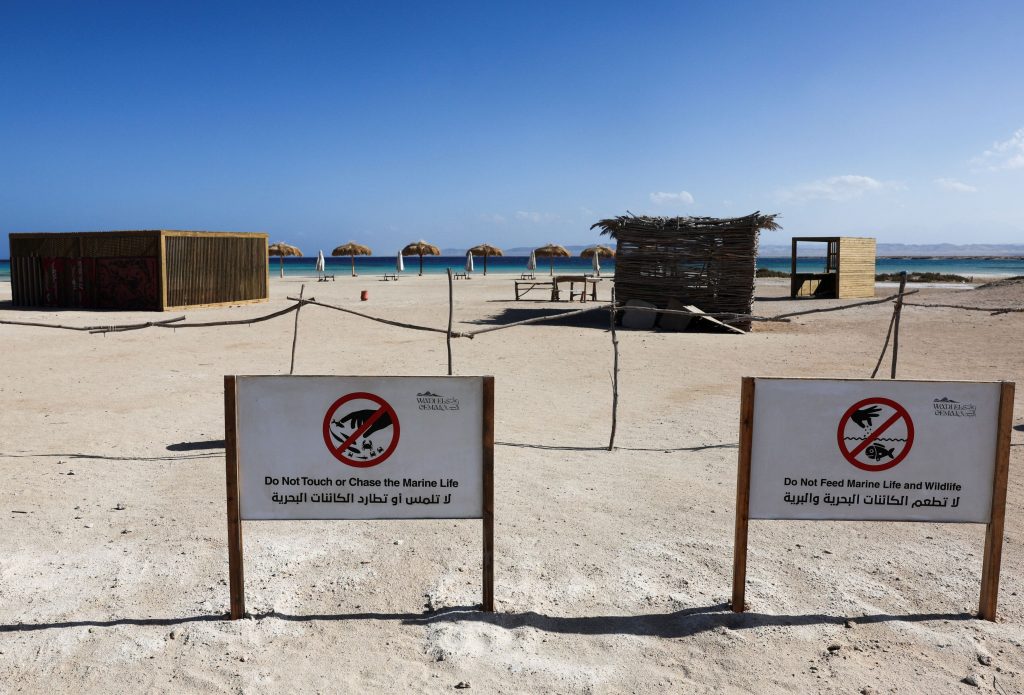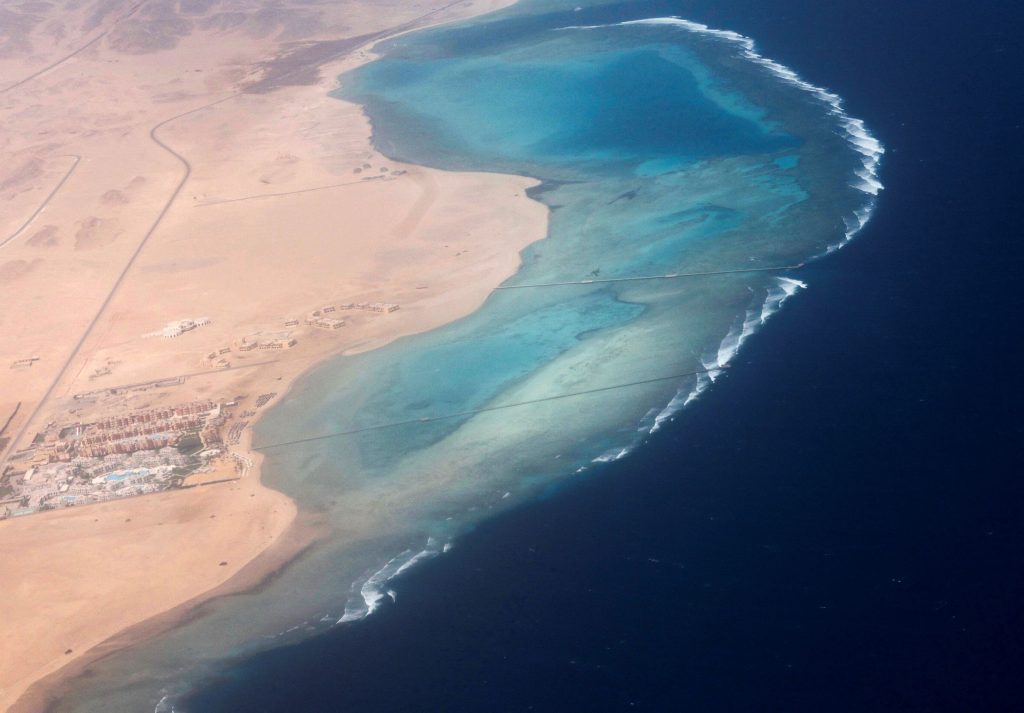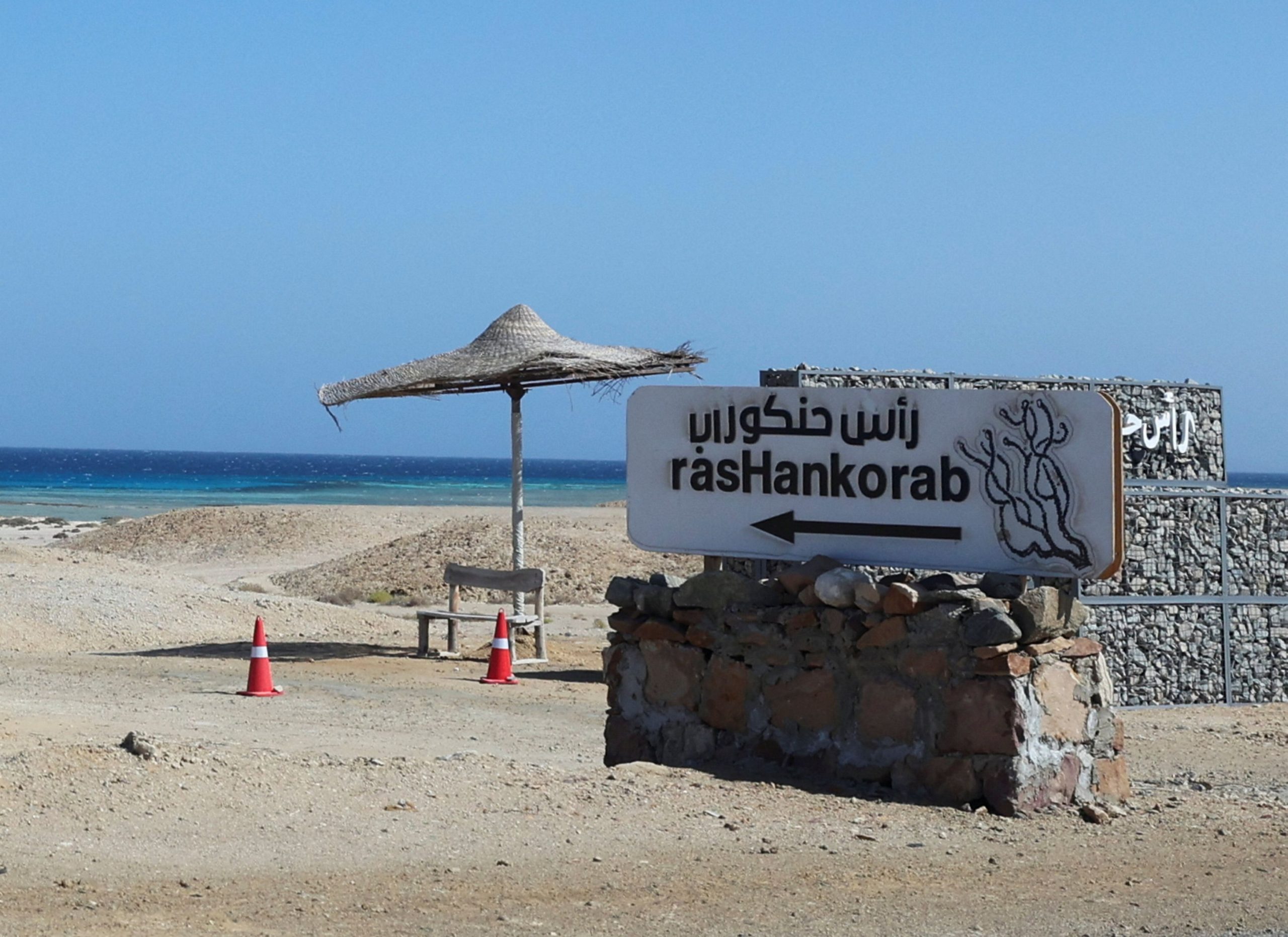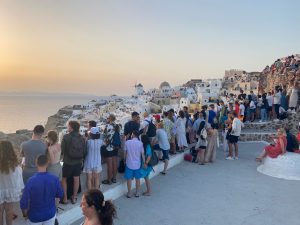As Egypt accelerates efforts to become a global tourism powerhouse, one of its most unspoiled Red Sea beaches is teetering on the edge of environmental crisis.
Ras Hankorab Beach, nestled within Egypt’s Wadi el-Gemal National Park along the southern Red Sea coast, is celebrated for its crystal-clear waters, white sands, and vibrant coral reefs. Once a secluded sanctuary, this ecological haven is now under mounting threat from Egypt’s ambitious tourism expansion.
The Push for 30 Million Tourists
According to the Egyptian State Information Service, the government aims to attract 30 million tourists annually by 2028, positioning tourism as a cornerstone of its economic development strategy. This surge has spurred rapid development in previously untouched areas like Ras Hankorab, raising alarms among conservationists who warn that unchecked growth could cause irreversible harm to fragile marine ecosystems and disturb the balance of the protected park.

View of signs surrounded with a barrier made of wooden sticks in front of Ras Hankorab beach in Wadi el-Gemal National Park, home to one of the country’s last unspoiled marine ecosystems with crystal clear waters and white sands, at southern Egypt’s Red Sea coast in Marsa Alam, Egypt March 23, 2025. REUTERS/Stringer
Conservationists Sound the Alarm
“The more development on the Red Sea coast, the more important it becomes to leave this small part untouched,” Sherif Baha el-Din, co-founder of Wadi el-Gemal National Park, told Reuters. “If we must develop, let’s talk about where. But the best thing to build here is nothing at all.”
A Global Pattern of Overtourism
Egypt’s situation reflects a broader global trend in which overtourism imperils natural and cultural landmarks:
In Thailand, Maya Bay on Koh Phi Phi Leh island endured extensive coral damage from as many as 5,000 daily visitors, prompting authorities to shut it down in 2018 for ecological restoration. The bay has since reopened under strict visitor caps.
In Peru, Machu Picchu’s ancient stone paths have suffered erosion due to heavy tourist traffic. According to the Protect Earth Foundation, the site’s terraces are crumbling, prompting tighter visitor limits.
In Italy, Venice battles mass tourism as cruise ships damage its foundations and pollute its canals. Despite a tourist tax and a cruise ship ban, challenges remain.

An aerial view shows the coast of the Red Sea, through the window of a plane before landing, in Marsa Alam, Egypt March 23, 2025. REUTERS/Stringer
Balancing Growth with Preservation
These cases underscore the complexities of managing overtourism, particularly when natural beauty and cultural heritage collide with economic incentives. Striking a balance between sustainable tourism and conservation remains a global challenge.
What’s at Stake for Ras Hankorab
For Egypt, the path forward hinges on implementing responsible tourism policies that safeguard Ras Hankorab Beach’s delicate ecosystem while still fostering economic growth. Without careful planning and enforcement, this Red Sea treasure—like many others around the world—risks losing the very qualities that make it so alluring in the first place.








